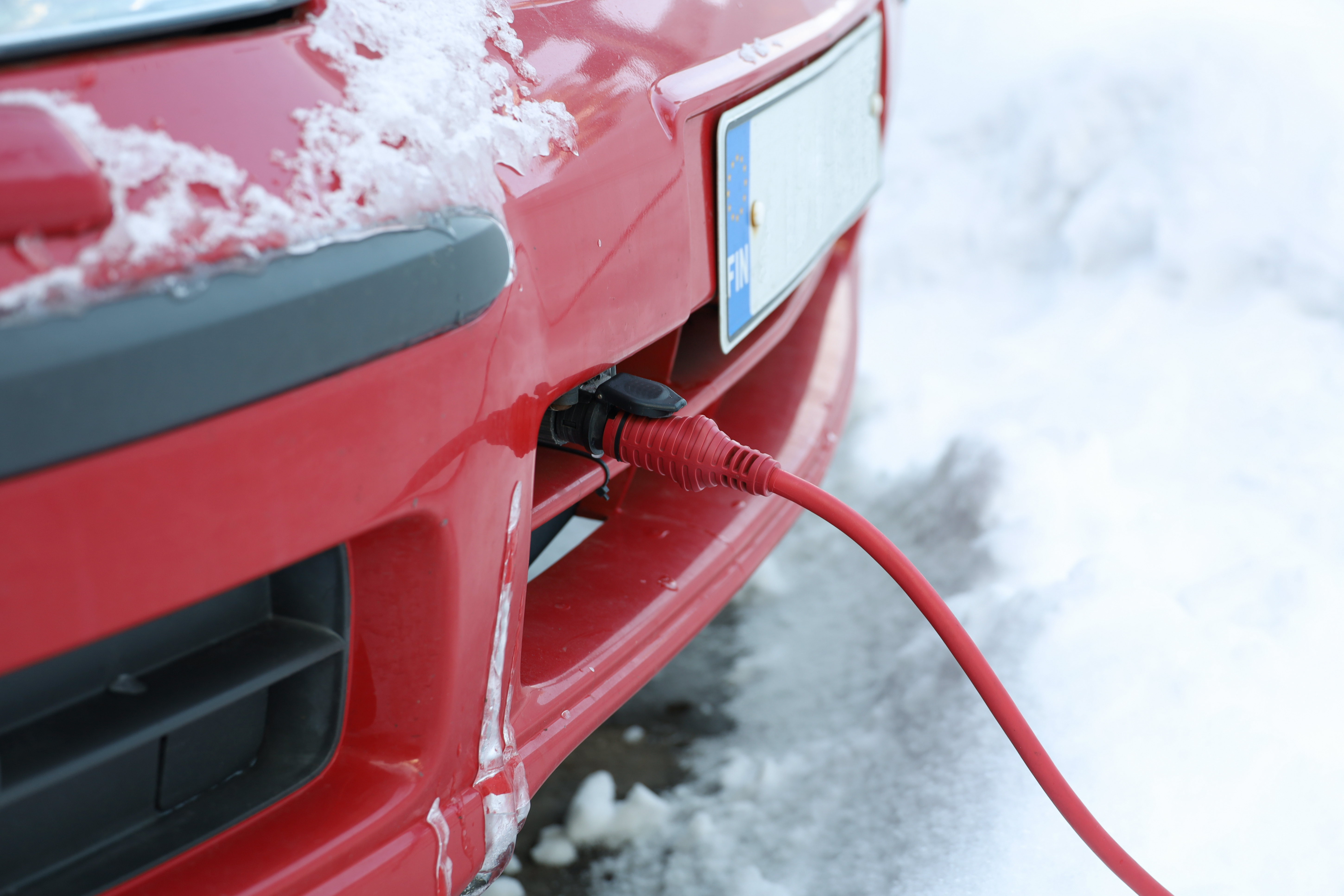When the first frost hits the pavement in the Treasure Valley, Idaho drivers know it’s time to prepare their vehicles for unpredictable road conditions. From frozen highways to sudden snow flurries, traction can be the difference between a safe commute and a dangerous slide. At Naylor’s Auto Repair, located in the heart of Boise, we help residents make the best seasonal tire decisions by offering up-to-date legal information, expert maintenance, and hands-on service.
As Idaho’s weather becomes more erratic due to shifting climate patterns, drivers must stay ahead of the conditions—not just with common sense, but with the right tires for winter driving. Whether you're debating between studded and studless tires or want to understand your legal responsibilities, this guide is designed to answer your questions and keep you on the road safely.
Studded Tire Dates in Idaho (2025-2026): Know Before You Install
Legal Usage Period
The Idaho Transportation Department (ITD) mandates that studded snow tires are legal from October 1 to April 30. This window is strictly enforced to minimize unnecessary road wear. Since studded tires have metal protrusions that dig into ice and compact snow, they also erode dry asphalt. That’s why the seasonal restriction is so important for public road preservation and taxpayer savings.
Specific Dates for 2025-2026 Season
- Studded tires allowed starting: October 1, 2025
- Studded tires must be removed by: April 30, 2026
Using studded tires outside of this window can result in citations or fines, especially if your tires are found to cause damage to roads. Law enforcement in Boise and Ada County routinely checks for compliance during spring inspections.
Exemptions or Emergency Extensions
Idaho does not typically extend the studded tire season unless extreme weather is declared at the state level. Unlike some neighboring states, no formal emergency exemptions are issued unless declared by the Governor or ITD due to blizzard-like conditions. It’s best to schedule tire removal by late April to avoid any compliance issues.
Traction Tire Options: Which Is Right for Boise Winters
Choosing the right tires isn’t just a mechanical decision—it’s a legal and safety responsibility. At Naylor’s Auto Repair, we inspect hundreds of vehicles each season and advise customers based on their commute, elevation, and driving frequency.
Let’s compare Idaho’s top three winter tire options.
Studded Winter Tires
Definition: Tires embedded with metal studs that provide deep traction on ice and hard-packed snow.
Pros:
- Best option for driving in elevated, rural, or mountainous areas
- Excellent grip on glare ice, particularly in early morning or late-night drives
- Ideal for long-distance commuters driving through snow corridors (e.g., I-84 into the Magic Valley or Hwy 55 to McCall)
Cons:
- Legally restricted to October–April
- Can damage pavement and produce more road noise
- Decreased fuel efficiency due to rolling resistance
Recommendation: Best for drivers traveling to areas like Bogus Basin, Tamarack, Sun Valley, or for those living outside Boise city limits.
Studless Winter Tires
Definition: Also known as “friction tires,” these use soft rubber compounds and aggressive siping patterns to grip snow and ice without studs.
Pros:
- Legal to use year-round in Idaho
- Superior stopping power in fresh snow and slush
- Less wear on Boise roads, making them environmentally friendlier
Cons:
- Slightly less grip than studs on sheer ice
- Can wear faster in warm weather, making off-season storage necessary
Recommendation: Excellent for most Boise drivers who stick to urban and suburban roads like State Street, Overland Road, and I-184.
All-Weather Tires
Definition: These are not all-season tires. All-weather tires carry the Three-Peak Mountain Snowflake symbol (3PMSF), certifying them for winter use.
Pros:
- Safe for all four seasons—no changeover needed
- Good for mild to moderate winters like those in the Treasure Valley
- Ideal for drivers with limited storage or budget for a second set
Cons:
- Not as effective on black ice or deep snow as dedicated winter tires
- Treadwear may increase during summer’s high temperatures
Recommendation: Perfect for city dwellers in Boise, Meridian, and Eagle who want convenience without sacrificing safety.
Boise Climate Trends: What Drivers Can Expect
Boise winters are known for being unpredictable. While average snow accumulation sits at 19 inches annually, December to February often brings icy mornings and sudden snow squalls. In recent years, Boise has experienced unusual freeze-thaw cycles—resulting in hidden black ice and increased fender benders.
According to the National Weather Service (Boise Office), winter 2024-2025 saw:
- 12 ice-related traffic accidents in one week during January
- Over 60 percent of incidents occurred on unplowed or untreated roads
- Increased snowfall in foothill regions caused commuter slowdowns
With these patterns, traction matters more than ever. Even if you’re just headed to the grocery store or school pickup, poor tire selection can compromise control.
How to Decide What’s Right for You
Here are some helpful questions to consider:
- Do you frequently drive to high elevations (e.g., Bogus Basin, McCall)? → Consider studded tires
- Do you drive mainly within Boise city limits? → Studless or all-weather tires are safer and legal year-round
- Do you want to avoid seasonal changeovers? → All-weather tires offer one-and-done convenience
- Do you park outdoors or on a slope? → You need maximum traction for cold starts—opt for winter-grade tires
Tire Maintenance Tips for Cold Months
No matter what tire you choose, poor maintenance can reduce effectiveness by up to 40 percent, according to the Rubber Manufacturers Association (RMA). At Naylor’s Auto Repair, we recommend following this winter prep checklist.
Winter Tire Checklist
- Inspect tread depth: Replace at 4/32" or less for winter driving
- Check tire pressure weekly: Air contracts in cold weather, lowering PSI and safety
- Store off-season tires properly: Keep in cool, dry places away from sunlight or ozone
- Schedule seasonal rotations: Every 5,000 to 7,000 miles helps extend tread life
- Watch for cracks and dry rot: Tires degrade faster in cold snaps
Expert Boise FAQs: Tire Laws & Winter Driving
1. Are chains required on Idaho highways during snowstorms?
Yes. The Idaho State Police enforces chain laws during severe weather. On mountain passes like Lookout Pass or Lolo Pass, trucks and some passenger vehicles may be required to carry or use tire chains.
2. Can I drive on studded tires year-round if I live outside Boise?
No. Idaho’s studded tire law applies statewide, not just in Boise. You must remove studded tires by April 30, regardless of where you reside.
3. Are all-season tires good enough for winter in Boise?
Not recommended. All-season tires lack the cold-weather flexibility and tread design needed for icy roads. Instead, opt for all-weather or winter tires certified with the 3PMSF symbol.
4. How can I tell if my tires are winter-approved?
Look for the Three-Peak Mountain Snowflake (3PMSF) symbol on the sidewall. This is the only symbol recognized by federal transportation authorities for severe snow service.
5. Are tire inspections mandatory before winter in Idaho?
While not legally required, tire inspections are highly encouraged and often required by fleets, commercial operators, and government vehicles. At Naylor’s Auto Repair, we offer complimentary tire checks to ensure you're winter-ready.
Why Boise Drivers Trust Naylor’s Auto Repair
For over a decade, Naylor’s Auto Repair has been a cornerstone of the Boise community. Our ASE-certified technicians help thousands of Idaho drivers safely navigate winter roads with expert guidance, tire recommendations, and maintenance services tailored to the regional climate.
Here’s what sets us apart:
- Expert winter tire installations
- Legal compliance with Idaho DOT regulations
- Transparent, no-pressure service
- Conveniently located in Boise
Don't wait for the first snowstorm. Schedule your winter tire consultation now and drive confidently all season long.



